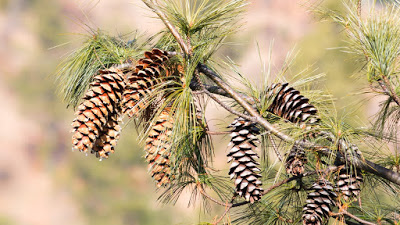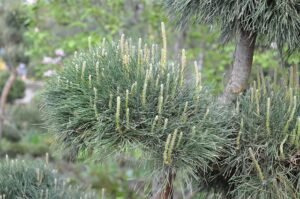Naked seed non-flowering plants are called gymnosperms. They are one of the most successful groups of seed plants also have a worldwide distribution. They constituted about 1/3 of the forests.
The term gymnosperm mans naked seeded (Gymno = naked and spermea seed). The ovules in these plants are not enclosed. The ovules are borne on the exposed surface of fertile leaves are called megasporophyll.
The gymnosperms are heterosporous plants. They show regular heteromorphic alternation of generation. Sporophytes independent and dominant sporophyte. It produces two types of spores, microspores and megaspores.
Microspores are grown on microsporophyll, and megaspores are grown on megasporophyll. The megasporophyll cover ovule. These sporophylls are not folded or joined at the margins to form an ovary.
These sporophylls are not folded or joined at the margins to form an ovary. Therefore, they remain naked on megasporophyll. The gametophyte is less conspicuous and dependent. The female gametophyte is permanently retained within the ovule.
Occurrence
Gymnosperms are naked seeded plants. Gymnosperms are a group of ancient plants; they became dominant in the Jurassic period. Most of the gymnosperms are evergreen trees. Some shrubby plants also are found during this group. They have a worldwide distribution. They are most abundant in the temperate region. The fossils of gymnosperms can be found near coal and oil deposits like places.
Life Cycle
Gymnosperm shows a transparent alternation of sporophytic and gametophytic generations. The plant body is the sporophytic generation, and gametophytic is very much reduced. It had utterly lost independent existence.
For Example
A sporophyte ( Vegetative plant)
The plant body is the sporophyte. It is well-differentiated into roots, stems, and leaves.
1. Roots:
Primary or tap roots tap root is well developed. Root develops root caps. Coralloid roots are mycorrhizal roots that are found in some genera. Roots develop root caps. Coralloid roots and mycorrhizal roots are found in some genera. Roots provide mechanical support to plants also absorb water and minerals for plants.
2. Leaves: for two types:
(a) Microphyllous or scale leaves: They are scale-like leaves. These are a much smaller size. These are found in Ephedra. Scale leaves are associated with the foliage leaves in other plants.
(b) The leaves of Megaphyllous or foliage: These are large in size and well-developed in shape. Both simple and compound leaves are found. The foliage leaves are without a reticulate venation. The branches of the veins are dichotomous types.
The leaves are modified to withstand the xerophytic conditions. The leaves have a rigid cuticle, sunken stomata, and mesarch bundle. These are found in Cycas and pinus. Leaves of cycas may reach a length of six feet.
3. Stem:

The stem is woody. Collateral ( arrange in rings) Vascular bundles and open. They are placed during a round within the primary stem.
Secondary growth takes a plan by the activity of the cambium. It produces secondary xylem (wood). Xylem is formed of xylem parenchyma and tracheid. They have no real vessels except the order of Gentiles. The phloem is composed of phloem parenchyma and sieve tubes.
But they are without any companions cells. Primary cambia may remain active throughout the life of the plant. The secondary and tertiary cambia are formed. It produces alternates zones of wood. The bark is produced by the activity of phellogen on the surface.



